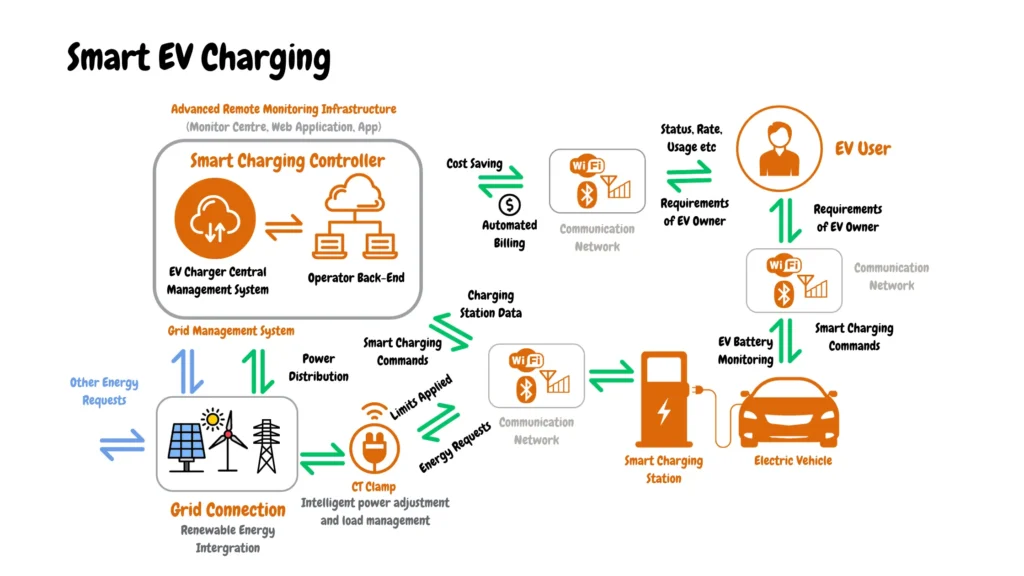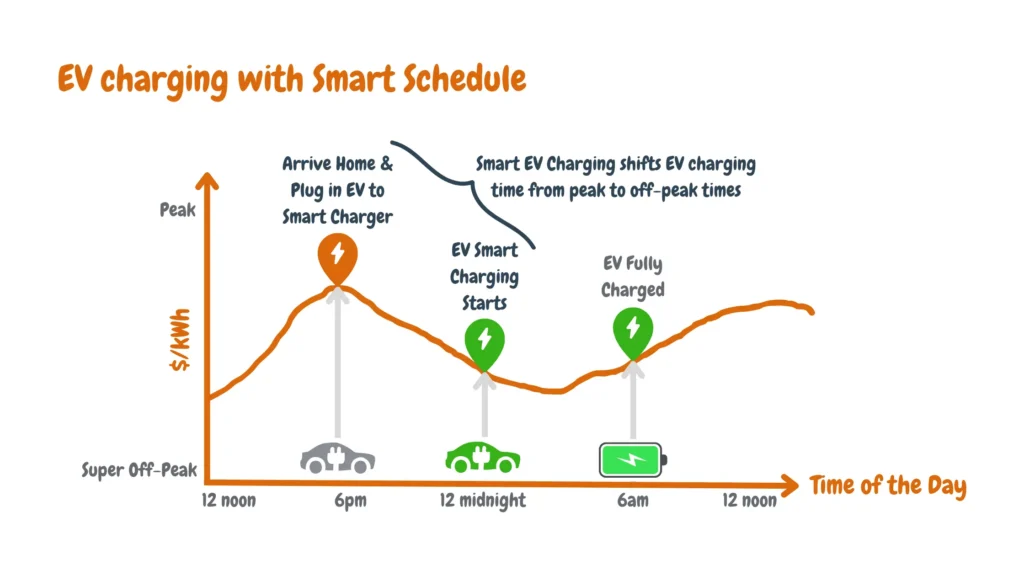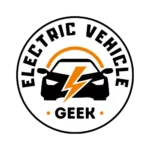Installing a Single-Family Home EV Charger is not just a practical choice; it’s a transformative step toward a more sustainable and energy-efficient future. For the ever-growing community of electric vehicle (EV) enthusiasts, the convenience of charging at home is a game-changer.
Most electric vehicle (EV) drivers charge at home because it’s cheap and convenient. The chart below shows that 80% of EV owners have access to Home & Work charging stations, 15% charge at work, and 5% charge at other places.
The simplicity and cost-effectiveness of a Home EV Charger make it the preferred option for many, with Level I and Level II charging being the primary choices. Level I, using a standard 120-volt outlet, may be slower but fits many daily charging needs. On the other hand, Level II charging, requiring a 240-volt outlet, offers a faster and more efficient alternative.
However, navigating the installation process can be daunting, especially for a single-family home. This comprehensive guide aims to be your compass in this journey, making Single Family Home EV Charger Installation an accessible and hassle-free endeavor.
Whether you’re new to electric vehicles or a seasoned driver, our guide is here to simplify the process and empower you to embrace the future of home EV charging confidently.
Included in this guide:
What to Consider When Installing an EV Charger?
The first step when installing your home EV charger is to determine your charging needs and access the available resources at your home to optimize your charging experience.
Before committing to anything, ask yourself the following questions:
How many miles do I drive my EV each day?
How long should I leave my EV plugged in?
What EV charger power source is available to me?
What is the phase of power in my home?
Three-phase connections also offer higher capacity, allowing additional connections without system overload. When applying for a new connection and planning an EV charger installation, opting for a three-phase connection is advisable, especially for faster charging capabilities. However, if recharging overnight, the type of phase will have minimal impact.
What is the current electrical load in your home?
What is the current condition of my home’s electrical panel?
Where should I install the EV charger?
For those drawing power directly from the grid, proximity to the nearest power outlet is essential. A significant gap between the charger and the grid connection may incur additional expenses for wiring. Prioritize convenience and cost efficiency when selecting the installation location, factoring in power source considerations for an efficient and effective charging setup.
Electric Vehicle Charging & Range
Selecting the appropriate electric vehicle (EV) charger depends on your EV’s range and charging needs.
| Level One EV Charger | Level Two EV Charger | Level Three EV Charger | |
|---|---|---|---|
| Voltage | 120V | 240V | 208 or 480V |
| Charging Time | 2-5 miles of range per 1 hour of charging | 10-20 miles of range per 1 hour of charging | 180-240 miles of range per 1 hour of charging |
| Outlet | Common household outlet | Common household outlet | 3-Phase AC |
- Level 1 charging, utilizing a standard 120-volt outlet, is the most accessible and slowest, providing approximately 2-5 miles per hour. This option is practical for shorter commutes and convenient for daily charging at common household outlets.
- Level 2 charging, utilizing a 240-volt outlet, is ideal. This type offers 10-20 miles of charge per hour and is commonly installed at home with the help of an electrician. It suits EV owners who primarily charge overnight or during extended periods at home.
- Lastly, Level 3 charging, known as “DC charging” or “fast charging,” mimics a public gas station setup. While more expensive to build, Level 3 chargers provide the fastest charge, crucial for drivers on the go. Typically found at public charging stations, these chargers can replenish 80% of an EV’s battery in about 20 minutes, making them optimal for long-distance travel and reducing downtime on the road.
Is It Worth Installing a Level 2 Charger at Home?
Yes, installing a Level 2 home EV charger offers faster charging, cost savings, convenience, and potential incentives. If you’re ready to enhance your EV ownership experience, investing in a Level 2 charger is a smart and practical choice.
Best Home EV Chargers
A Comprehensive Guide to Choosing the Best Home Car Charger
Rapid Charging Efficiency
The standout feature of a Level 2 home EV charger is its significantly faster charging speed. While a Level 1 charger provides three to five miles of range per hour, a Level 2 charger delivers over 20 miles in the same timeframe. A Level 2 charger can take your EV from empty to fully charged in just 3-8 hours, starkly contrasting to the 11-20 hours required by a Level 1 charger.
Cost-Efficient Charging
Beyond the time savings, upgrading to a Level 2 charger can translate into notable cost savings. Many chargers offer the flexibility to take advantage of lower electricity rates during specific hours, allowing you to schedule charging when rates are most favorable. Some Level 2 chargers use smart technology to choose the most cost-effective charging times based on utility rate schedules.
Seamless Convenience
Installing a Level 2 charger at home eliminates the need to rely on external charging stations. Most public charging stations offer Level 2 chargers, so having one at home ensures convenient and quick charging without the hassle of searching for public points.
Financial Incentives and Rebates
Installing a Level 2 charger at home opens avenues for potential tax incentives and rebates. Federal and state-level programs, such as:
- Residential EV Charging Incentive Program: Hardwired Level 2 EV chargers are eligible for a rebate through this program. Applicants must provide proof of installation from a licensed electrician or a final electrical city permit.
- IID’s Electric Vehicle Incentives: Customers who purchase and install a Level 2 (240-volt) plug-in electric vehicle charger can receive up to $500 rebates.
- ECE’s Level 2 Charger Rebate: ECE offers a $750 rebate to install a Level 2 charger on either the time-of-use or off-peak storage rates.
- EVCO’s Tax Credit: The federal government offers a tax credit of 30% off the purchase and installation of at-home Level 2 charging, up to $1,000.
Electrical Considerations
Installing a Level 2 charger demands precise electrical planning. Like major appliances such as ovens or dryers, a Level 2 charger requires a professionally installed 240-volt outlet on a dedicated circuit. Ensuring your home’s electrical panel accommodates the additional load is vital. A licensed electrician, preferably one with EVITP certification, is essential for a safe and compliant installation.
Electric vehicles come equipped with onboard chargers that convert AC power from your wall outlet to DC power usable by the vehicle’s battery. The vehicle’s onboard charger’s kW rating determines the charging speed. To achieve the fastest Level 2 charging rate, it is advisable to select an Electric Vehicle Service Equipment (EVSE) that can deliver power at a comparable rate.
The provided table indicates the necessary amperage based on desired power delivery, aiding discussions with your electrician to assess the additional load your circuit can handle.
| Circuit breaker (amps) | Maximum output (amps) | Ev charger power rating (kW) | Miles of range added (per hour) | Miles of range added (overnight) | Approx kWh Added (overnight) |
|---|---|---|---|---|---|
| 100 | 80 | 19.2 | 35-75 | 350-750 | 175 |
| 60 | 48 | 11.5 | 20-45 | 200-450 | 105 |
| 50 | 40 | 9.6 | 18-38 | 175-375 | 85 |
| 40 | 32 | 7.6 | 15-30 | 150-300 | 70 |
| 30 | 24 | 5.7 | 11-22 | 100-220 | 50 |
| 20 | 16 | 3.8 | 7-15 | 70-150 | 35 |
| 15 | 12 | 2.8 | 5-11 | 50-110 | 25 |
Choosing the Right EV Home Charger: Key Considerations
Energy Efficiency
65% of EV drivers consider energy efficiency paramount when selecting an EV home charger. Amidst the ongoing energy crisis, this consideration has gained even more prominence. Smart charging features in newer chargers enhance efficiency and allow users to monitor and control energy usage, contributing to substantial cost savings.
Ease of Use
With 54% of EV drivers prioritizing ease of use, selecting a charger simplifying the transition to electric mobility is crucial. Many EV home chargers incorporate user-friendly LED lights for quick status checks during charging sessions. Additionally, smartphone apps offered by connected charging stations enable remote monitoring and control, making the charging process seamless.
EV Charger Warranty
Considering the significant investment in EV home charging stations, 47% of EV drivers emphasize long warranties, while 25% prioritize preventative maintenance services. Ensuring the longevity of your home EV charger is essential. Some vendors provide extended warranties and additional service options, contributing to sustained reliability. Smart EV chargers benefit from software updates and remote servicing, minimizing the need for in-person visits.
Insights into Charging Behavior
The connectivity of an EV home charger is often overlooked. Still, for 42% of EV drivers, viewing charging session costs and fees is crucial, with an additional 32% prioritizing access to insights.
Smart EV Chargers offer real-time insights into energy use and costs, empowering drivers to make informed decisions during charging and trip planning to reduce electric vehicle range anxiety and charging anxiety. Understanding energy consumption and charging costs aids in optimizing overall efficiency.
Is a Smart EV Charger Worth It?
Yes, a smart EV charger is worth it. Beyond the basic models, it offers features like data collection, scheduling, and remote monitoring, optimizing charging costs. In a time-of-use pricing setup, this investment provides greater control and potential savings, contributing to grid reliability.
Basic models of Level II EVSE are budget-friendly but provide minimal control over the car’s charging rate. On the other hand, more advanced and pricier EVSE models offer features that can significantly enhance your charging experience.
Smart EV Charger smart features include data collection on charging habits, scheduling and managing charging sessions, and remote monitoring via smartphone apps as shown in the infographics image below:

The usefulness of these advanced features becomes apparent when considering the variable electricity pricing throughout the day. Many utilities are adopting time-of-use (TOU) rates, aligning consumer costs with the actual delivery costs of electricity. Managing an electric car’s charging in response to TOU price signals can lead to additional fuel savings and contribute to the overall reliability of the electrical grid.
While some utilities are progressing in implementing TOU rates and off-peak charging programs, our smart EV home charger can schedule charging to start charging automatically, when off-peak charging sessions start and stop charging when TOU rates are high.

Although most modern EVs come equipped with built-in charging schedulers, opting for a smart EVSE provides an additional avenue to efficiently manage your home electricity – offering additional features such as load management capabilities, bidirectional charging, and integration of renewable resources such as home solar EV charging. Investing in a smart EV charger may be worthwhile if having more control over your charging habits, accessing real-time data, and contributing to grid reliability align with your preferences.
Expert Opinion:
EV Charger Installer
Selecting the right EV charging station installer is critical for a successful project. Prioritize an installer with hands-on experience to ensure a smooth installation process.
A deep understanding of the EV industry is crucial for informed decisions, especially regarding EVSE manufacturers and product selection. Design considerations, including optimal placement for site lighting and ADA compliance, are often overlooked but play a significant role. Quality control, clear communication, and positive reviews indicate professionalism.
Finally, an EV installer will help you apply for financial incentives and rebates highlighted above to maximize cost savings.
Installing an Electric Vehicle (EV) charger is intricate, and requires expertise. While technically possible to self-install, it’s strongly discouraged without qualifications. DIY mistakes may lead to warranty loss, high costs, and safety risks. Always opt for an electrician certified in EV charger installation for a secure, compliant installation.

James Ndungu is a certified EV charger installer with over five years of experience in EVSE selection, permitting, and installation. He holds advanced credentials, including certification from the Electric Vehicle Infrastructure Training Program (EVITP) and specialized training in EV charging equipment and installation, as well as diplomas in EV Technology and Engineering Fundamentals of EVs. Since 2021, James has tested dozens of EV chargers and accessories, sharing expert insights into the latest EV charging technologies.







